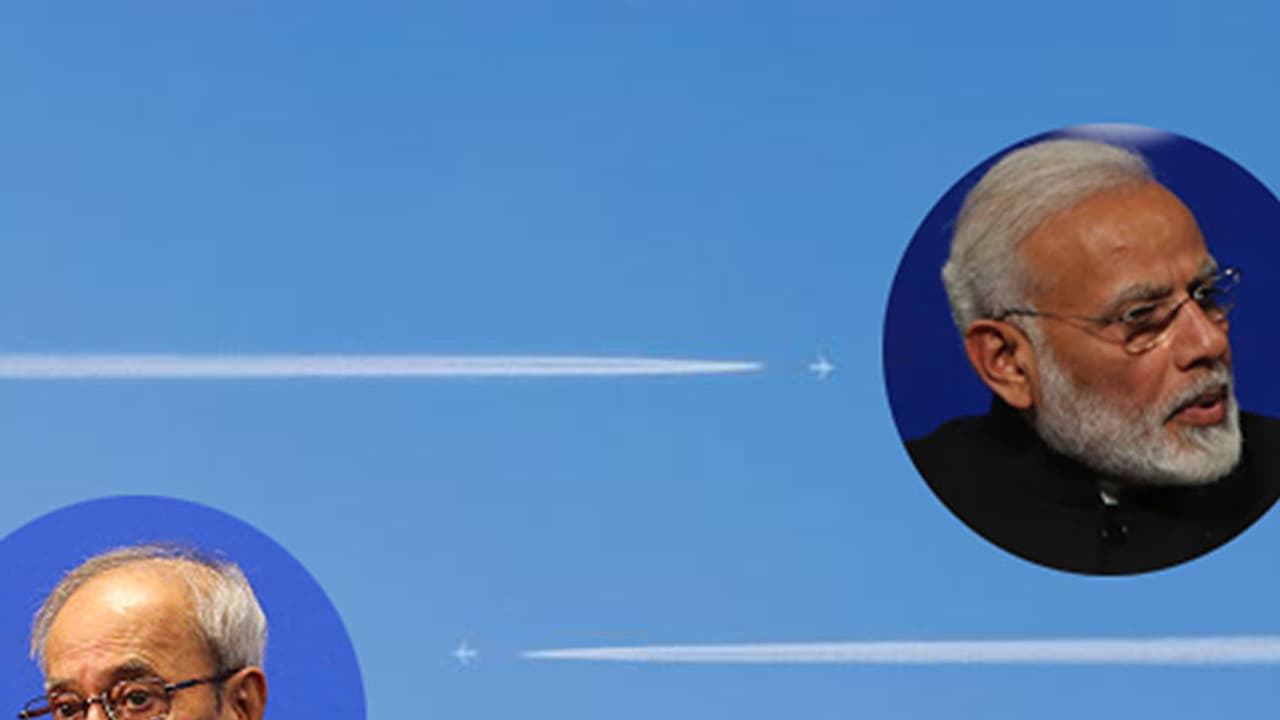Yes, there is a direct connection between these two. On Friday, after 8 pm, a lot of tension prevailed in the New Delhi Air Traffic Control. Luckily, Air Traffic controllers paved way for the smooth launch of GST.

To cut the long story short, two Indian Air Force special aircraft carrying President Pranab Mukherjee from Kolkata and another bringing Prime Minister Narendra Modi from Ahmedabad were to land at the same time at the New Delhi Palam VVIP Air Force Station. Since both are VVIPs, it was a high alert situation.
In such cases, the President of India gets precedence over the Prime Minister. But since the Prime Minister’s flight reported first to the ATC, the President’s aircraft landed after the Prime Minister's.
The SPG protecting the PM knew that Modi would directly go to Vigyan Bhavan where the GST council meeting was underway, following which the PM would be hosting a dinner as well. When the SPG requested ATC, the Air Force crew was feeling hesitant. The reason being - the VVIP tarmac is 3 kilometres away from the domestic airport tarmac and the ATC was having 18 flights requests pending for landing around the same time with minute to minute landings. It was raining, there was heavy wind preventing commercial aircrafts from landing and more. However, despite this confusion, the ATC handled it well.
Priority to Presidential aircraft was need of protocol and the President due to his advanced age wanted to reach Rashtrapati Bhavan first and then go to Central Hall. However, there was an eight-minute gap between the landing of the President’s aircraft and the Prime Minister's. So at 21.15 hours on Friday, ATC controllers breathed a sigh of relief, with two flights landing in two different runways, within a gap of four minutes.
This is how the ATC ensured smooth passage of both dignitaries. During VVIP movements, the Air Traffic Control closes the commercial aircraft landings. The experts at the ATC have often dealt with such kinds of close calls. Prime Minister Narendra Modi travels a lot, especially during state assemblies poll campaigns, and that’s when such emergencies arise.
How TK Rajendran, GST created history around the same time

Governor of Maharashtra and Tamil Nadu Vidyasagar Rao was also seated in front of the television to witness this historical event. But Vidyasagar Rao also created a little history of his own by signing the extension orders of Tamil Nadu Director General of Police TK Rajendran for two years. The DGP was to retire on Friday and instead of that received continuation orders.
The Governor’s Office informed the Chief Secretary about Rao clearing the orders at 11.15pm on Friday. Chief Minister E Palanisami, had at 10.45pm on Friday, submitted the file seeking for two years extension from Governor Rao.
Then the Tamil Nadu government at 11.30pm issued orders of TK Rajendran’s extension. The buzz making rounds in New Delhi is that the BJP government certainly helped Chief Minister E Palanisami in his request for two years extension. Union Home Minister, Rajnath Singh, was informed about this.
Since the Union Home Ministry does not come into action directly, the entire proposals and spade work was all done at the Union Public Service Commission office. Chief Secretary Girija Vaidyanathan spent four hours on Thursday at the UPSC office in New Delhi to move this file from one member to another.
The Chief Secretary speeded the DGP file in the UPSC office, is the buzz in New Delhi babudom. TK Rajendran was among four senior IPS officers whose names were approved by the full bench of eight members of the Union Public Service Commission at a meeting convened in New Delhi on Thursday. And by virtue of the Supreme Court guidelines in the Prakash Singh case and based on the Apex Court ruling, the Tamil Nadu Police Act states that an officer appointed as the head of the force “shall hold the post for a minimum period of two years, irrespective of the date of his/her superannuation.”
Who is Amit Shah’s favourite man in the party?

Buzz in New Delhi BJP headquarters is all about which General Secretary is too close to Amit Shah, the BJP Chief? We could think about quite a few of them now.
But for the Presidential poll campaign, Amit Shah has chosen 49-year-old Bhupendra Yadav, a Rajya Sabha MP. BJP is one political party where family rule or influence of dynastic politics is not visible. Amit Shah has an expertise in grooming youngsters to high positions. For the past two weeks, especially after Ram Nath Kovind’s name was announced by the BJP Parliamentary Board, Bhupender Yadav has been in constant touch with Amit Shah.
In fact, a new pattern by Amit Shah has been enforced. One Union Minister and two junior office bearers of the BJP will accompany the Presidential nominee during the visits of Kovind to state capitals to canvass for votes.
Amit Shah was dictating the names and Bhupender Yadav was seen taking notes and directing particular ministers and office bearers to join the Kovind entourage. It is the responsibility of the state unit to organise the boarding and lodging of Kovind and the BJP group accompanies Kovind.
Yadav , from Rajasthan, is a supreme court lawyer and has authored many books on legal angles of environmental issues. Bhupender Yadav joked that he might attempt a book in Hindi about the inputs which went into the election of a "BJP President of India".
Bhupender Yadav is all set to become a Union Minister in the Narendra Modi government in the October reshuffle. All thanks to the upbringing and grooming under Amit Shah.
(R Rajagopalan is a senior journalist based in Delhi. The views expressed here are his own and do not reflect those of Asianet Newsable.)
